NASA Open Science Gateway
A comprehensive platform for geoscientists to conduct their research workflows from start to finish, without relying on external resources.
Shipped
Data Visualization
SaaS
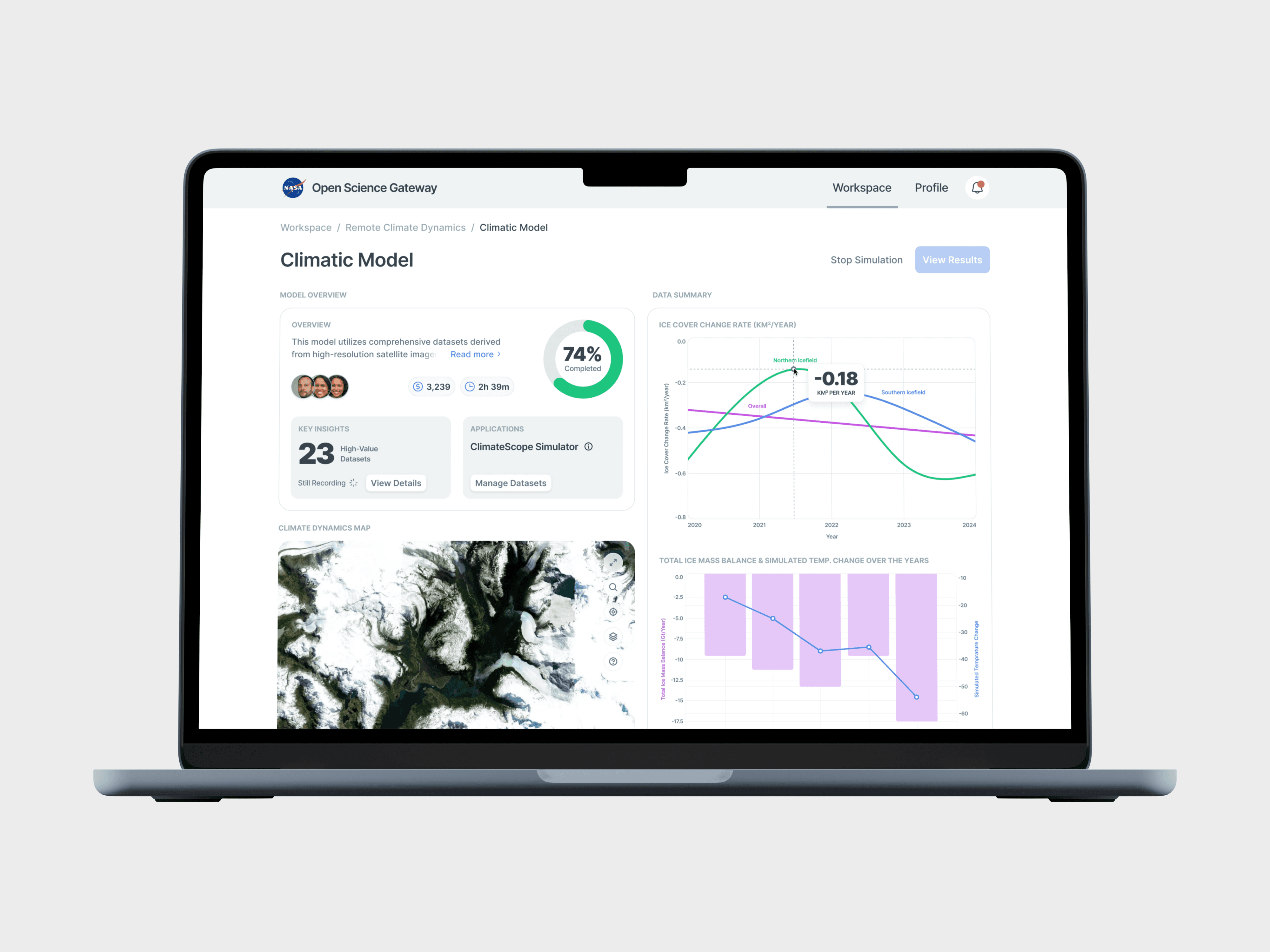
Role: UX Designer
Team: 2 UXDs
Duration: 4 Months (Jan - April, 2023)
What I Did
UI Design
User Interviews
Research Synthesis
Ideation
Background
1This project is funded by the NSF and undertaken as part of Indiana University's Cyberinfrastructure Research Center, along with other partner universities.
Context
NASA's VEDA (Visual Exploration Data Analysis) project is like a large online library of pictures and measurements of our planet, collected by NASA's satellites and other instruments.
VEDA makes it easy for anyone to search through this library, create visual representations of the data (like maps or graphs), and share their findings with others.

But there's much more to conducting scientific research than just finding the right datasets. That's where the problem lies.
Problem
In interviews with 5 geoscientists, we found that despite VEDA's efforts to accelerate research initiatives, scientists still had complex research workflows that hindered their progress.
Here's what a typical research workflow looks like.
It depends on various factors, such as the scientist's approach, the area of study, the team, the timeline, and more. But it usually involves the following key steps:
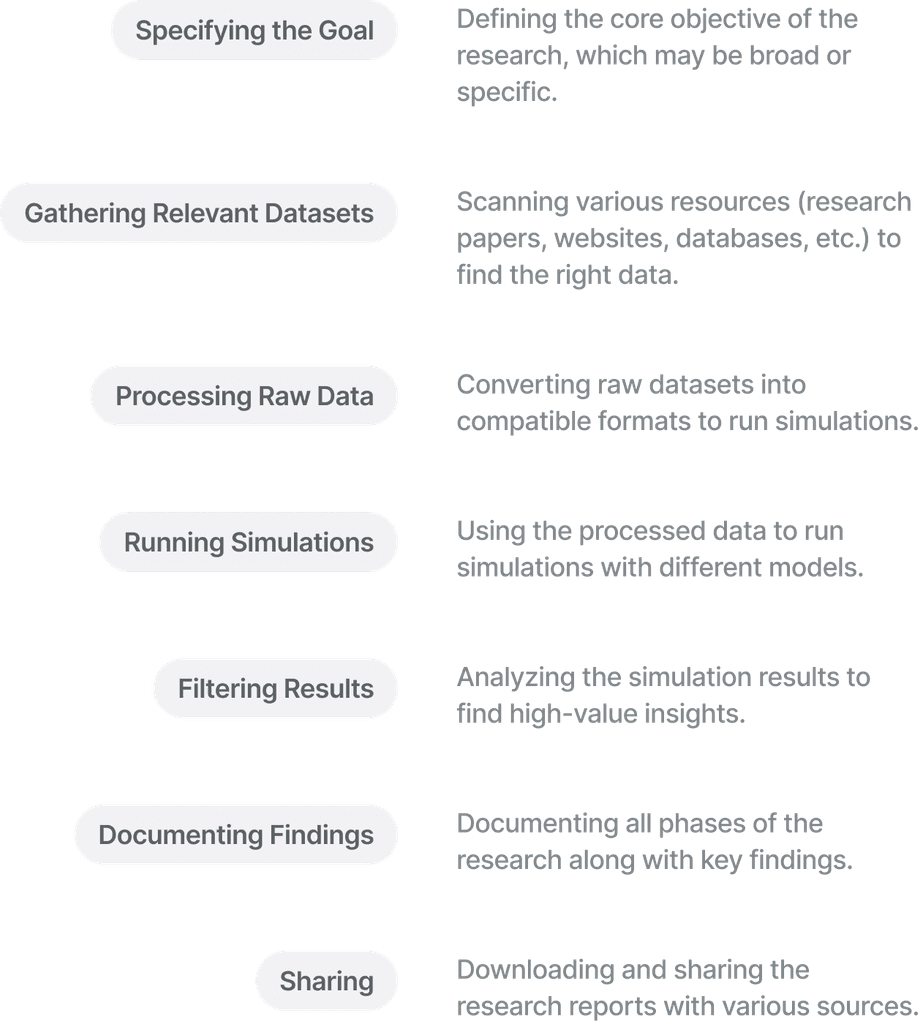
We identified four key issues in this flow.
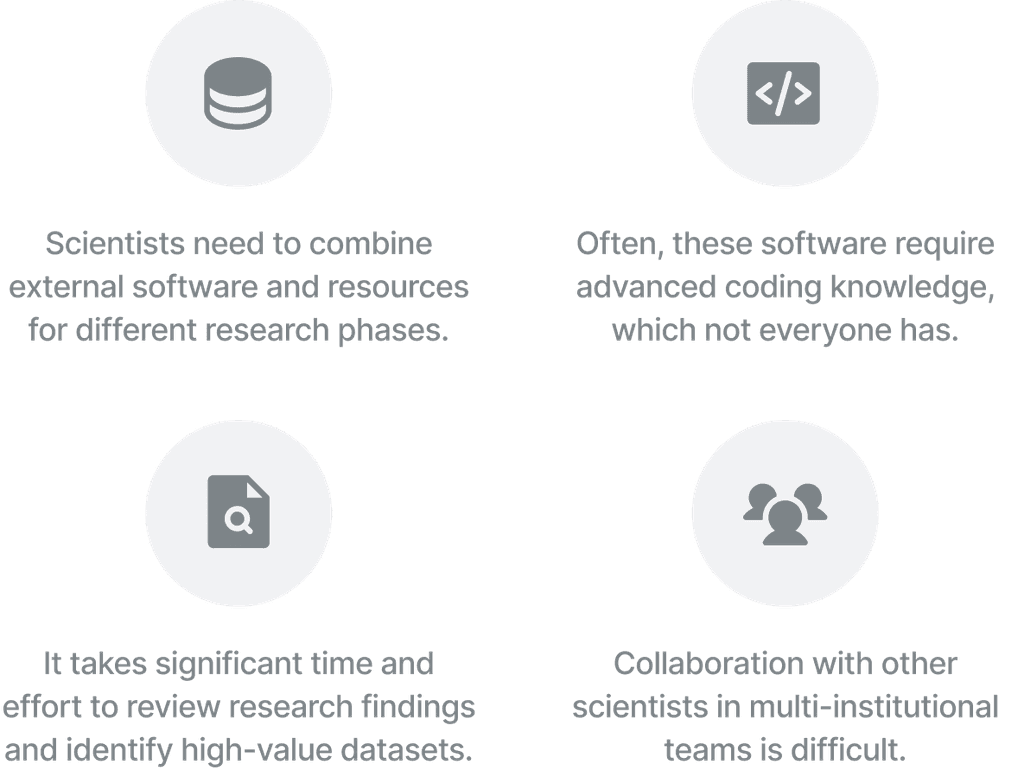
Add the complexities of the actual research study in the mix, and it's a lot to manage.
Goal
To provide geoscientists a user-friendly, collaborative platform that simplifies their research workflows and speeds up scientific discoveries.

That's a broad scope! What exactly did you, as designers, do to contribute?
Researchers at Indiana University already had the engineering capabilities for this North Star concept, but they weren't able to visualize how it would look and function. That's where we came in.
Research Insights
Based on the gaps we identified, we figured out three key elements needed in our concept:

To improve navigation, we established the fundamental structure of the platform and its components.
Workspace
It represents a user's entire scope of work, including multiple projects.
Projects
Models
Datasets
Applications
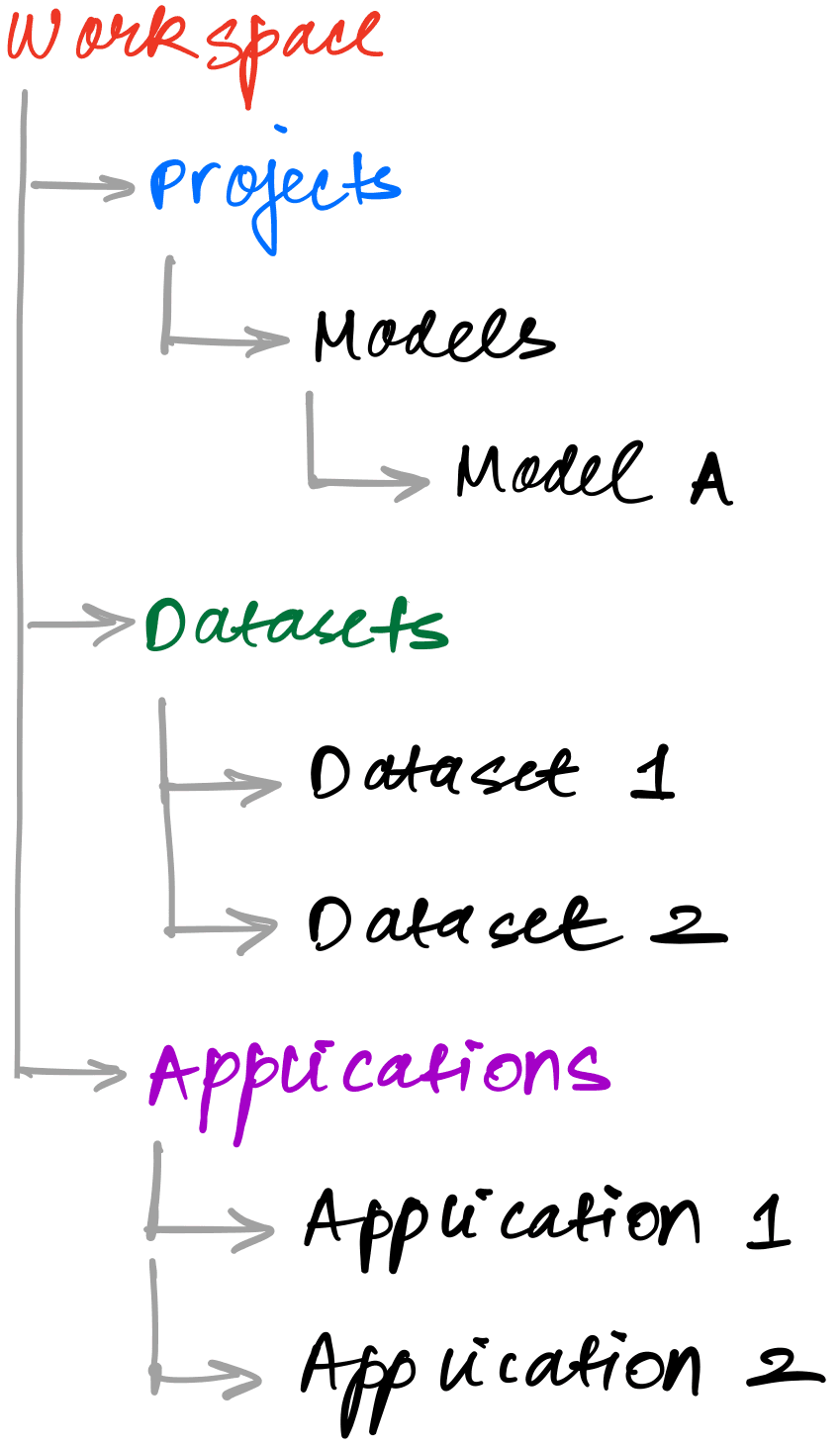
Solution
The NASA Open Science Gateway — an open-source platform that facilitates end-to-end research workflows for geoscientists without requiring them to rely on external resources.
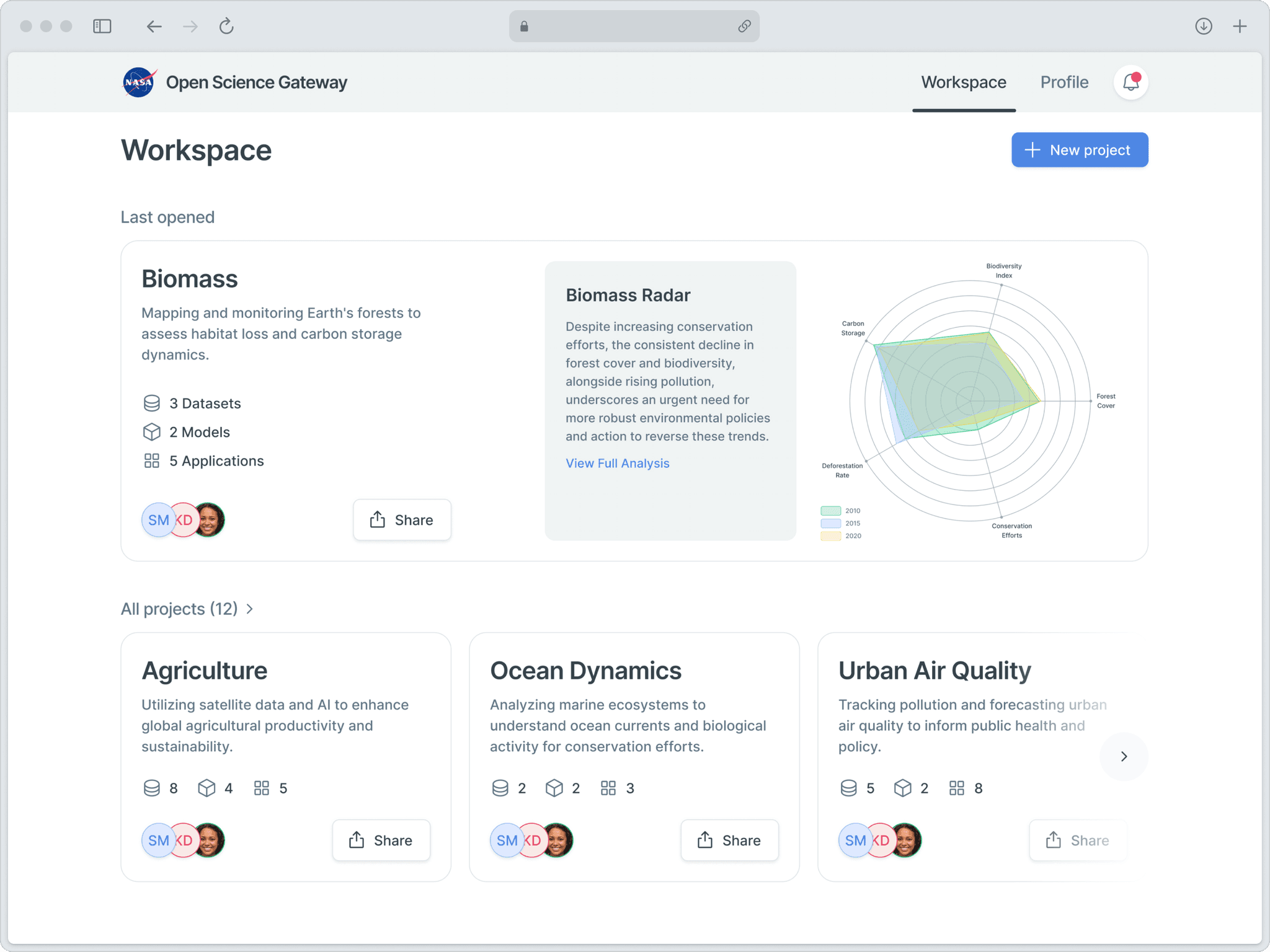
Why "gateway"? What does it mean in scientific terms?
A gateway serves as a digital entry point that connects scientists and researchers to the tools, resources, and collaborators they need to work effectively. It links the individual researcher to the broader scientific community and its collective knowledge and capabilities.
Let’s use James and his team's research journey as an example to understand the key parts of the solution.

James, a novice geoscientist at NASA, is conducting research on climate change in remote, untouched areas of the world with his teammates Emily and Natasha. The team has a tight deadline for this study, and they are concerned that they might run out of time.
James logs into the NASA Open Science Gateway, creates a new project in his workspace, and invites Emily and Natasha to join it.

The team uploaded raw data from field research, which was automatically made compatible with the chosen simulation model.
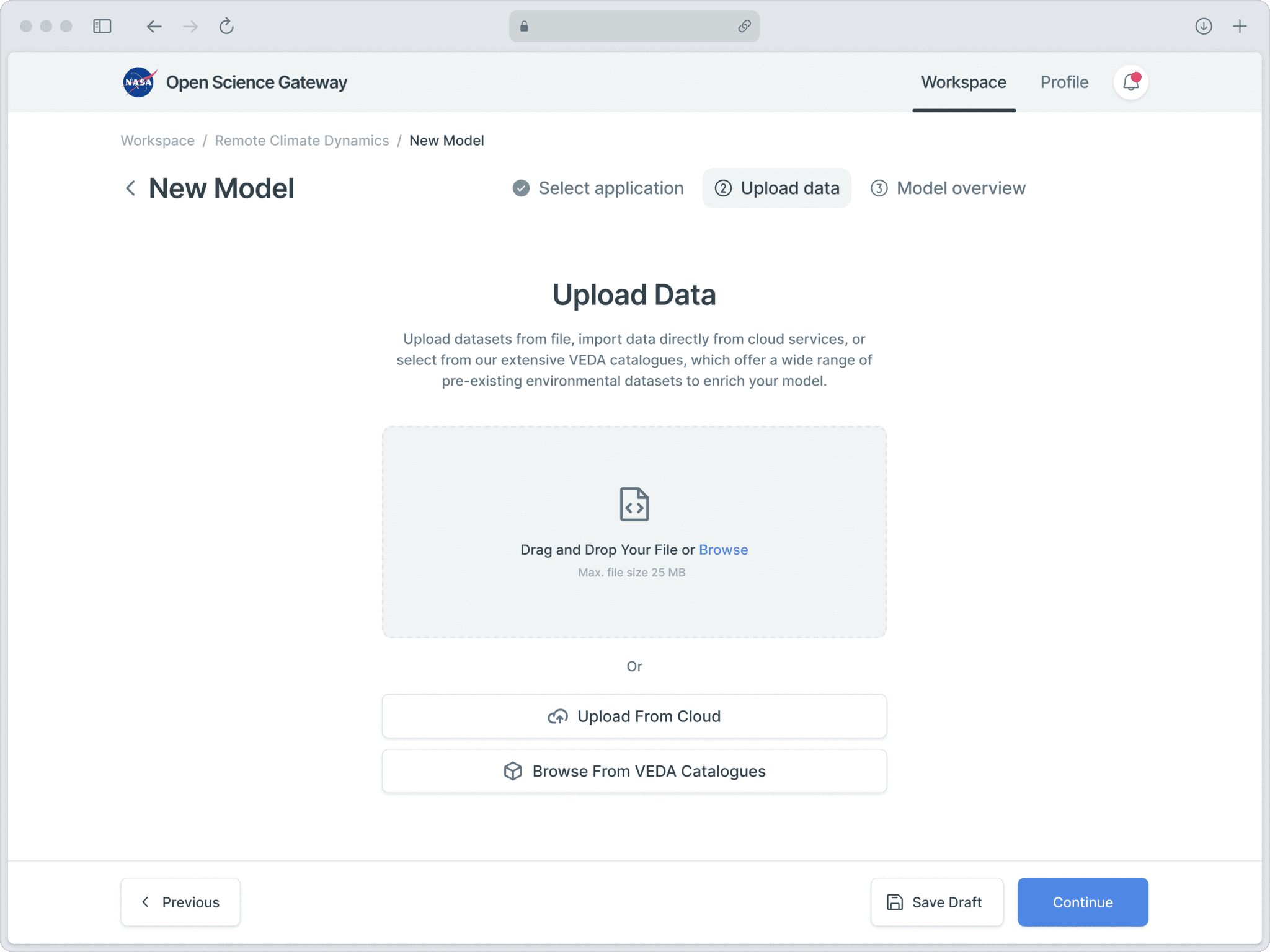
The system suggested suitable datasets for his selected model. Once he finalized the configuration, he initiated the simulation.
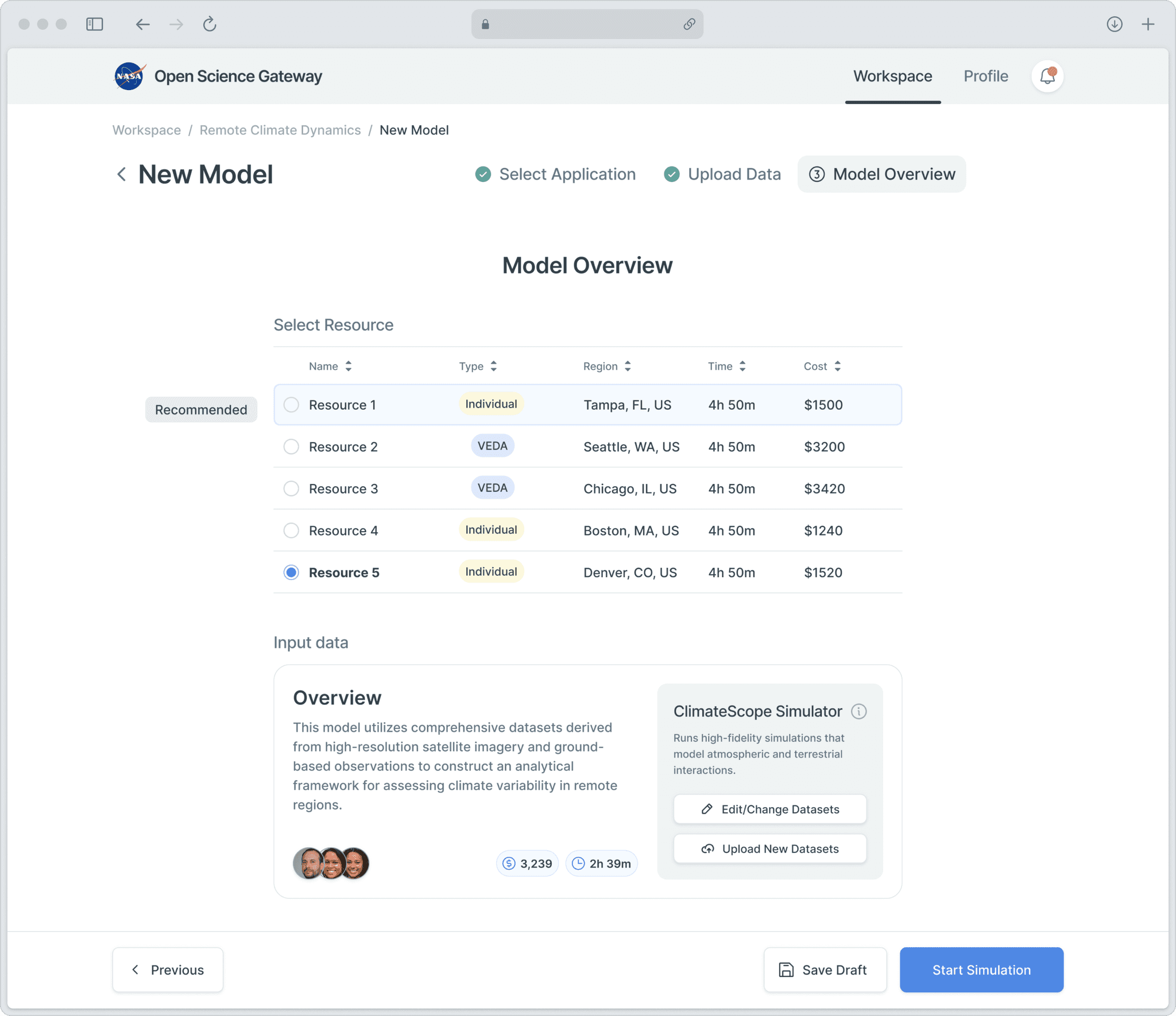
As the simulation runs, James can easily analyze and interact with various data points and monitor progress without worrying about manually recording important datasets.

The team's project produced groundbreaking insights, and the system automatically synthesized key findings into a report for them to edit and share as needed.
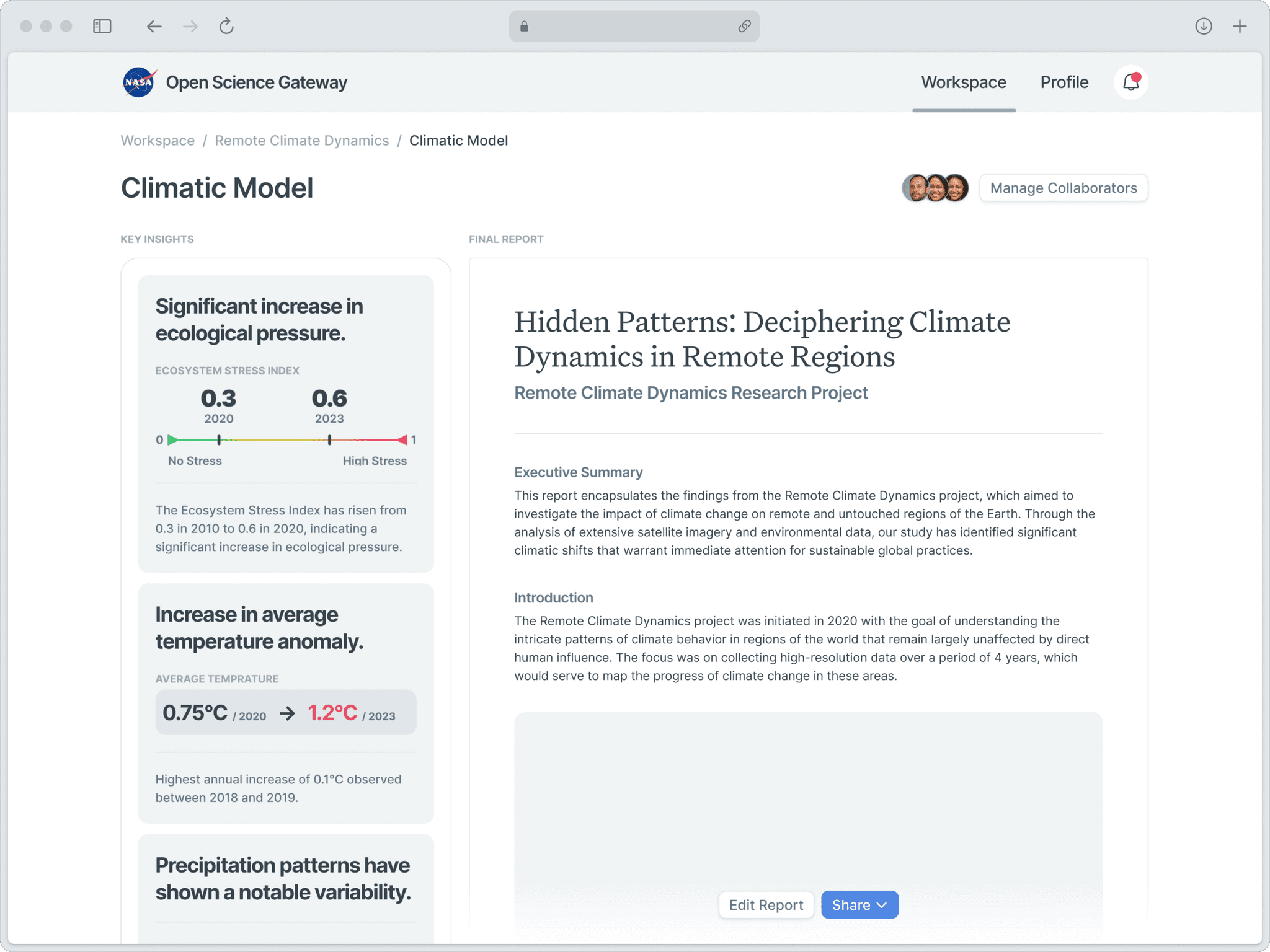
Featured Cases
We tested the solution with the geoscientists we had previously interviewed, and they observed significant optimization in their overall research workflow.
"[Once implemented] we'd be able to redirect our energy towards innovation, synthesis, and application of our findings—the aspects of our work that truly matter."
— [Anonymous] Earth Scientist
Featured Cases
